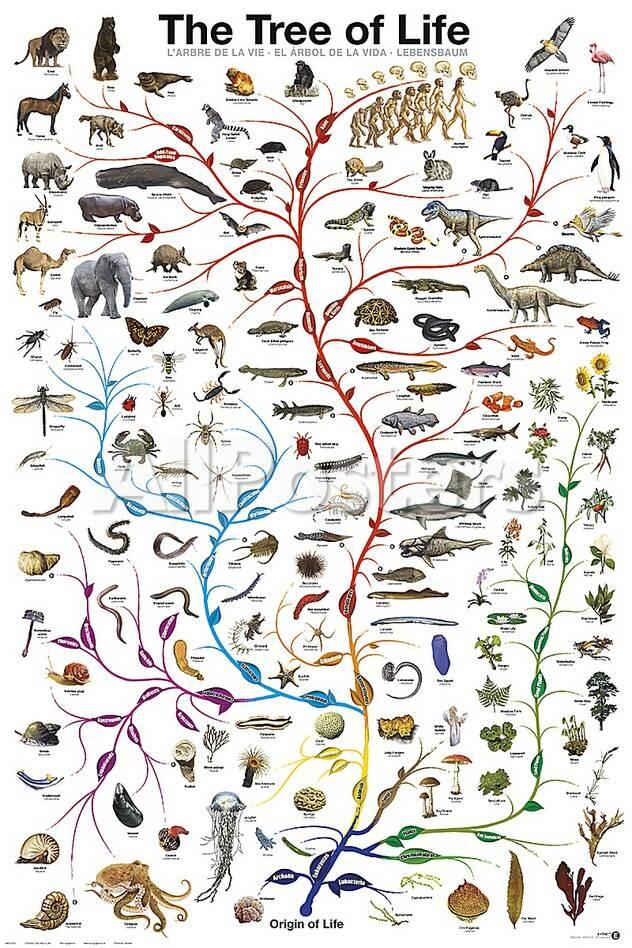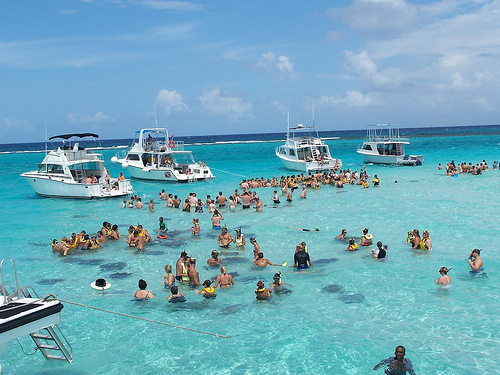5. A-Ray-Zing Stingrays
Description
Did you know that stingrays are related to sharks? And like sharks, stingray populations are at risk due to overfishing for fins, liver oil, and gills. Glide into all things rays, like their tropical habitat, the different shapes and species of stingrays, and how we can help rays around the world!

Photo: Nurse shark and ray, by Rachel T. Graham
In our fifth JBC this session, we learn all about stingrays, beginning with evolution and taxonomy, how sharks and stingrays came to be, the differences between sharks and ray, and some fun facts about stingray diversity. We explore the great variety of stingrays and sharks at the aquarium, wrapping up with a discussion on threats to these cartilaginous fish and conservation efforts currently in place to protect them.


Photos: Fishing lines and nets are real killers for stingrays of all shapes and sizes.
What did we do today?
What is evolution? We looked at the tree of life to see how all living things are related. With so much diversity, how can we tell what is what and who is who? Taxonomy! The science of sorting and classifying living organisms.


Photo 1: The Tree of Life. Photo 2: Classification of chordates (animals with vertebrae).
Characterized cartilaginous fish (what?!) by their defining features. They have cartilage instead of bone, placoid scales, they breathe through gills, they have a spiracle, they do not have a swim bladder, and they have extra special senses – their ampullae of Lorenzini and lateral line.
Explored the diversity of cartilaginous fish, specifically the Elasmobranchs (sharks, skates, and rays) through a PowerPoint presentation and videos.

/128117597-56a5f72d5f9b58b7d0df5068.jpg)
Photo 1: Pores with ampullae of Lorenzini in snout of Tiger shark. Photo 2: Up close look at some placoid scales on shark skin.
Dove into the world of stingrays – what are their key features, where do they live, how many species are there, etc.
Explored the galleries to find all the stingrays we have at the Aquarium. We ended at the Discover Rays exhibit, where we got some hands-on obse-RAY-tions of cownose and southern stingrays.


Photo 1: Discover Rays exhibit. Photo 2: One of the many threats to stingrays and sharks - tourism.
Wrapped up our session discussing various threats to stingrays and sharks, and a few conservation efforts currently in place to save them.
Questions to ask you Junior Biologists
1. What is the purpose of taxonomy? (Taxonomy provides a method for sorting living things into groups based on common characteristics. Think of a grocery store – it is easy to find items in a grocery store because the store is organized by rows and categories. It is easier to learn about organisms and share research about organisms because they are categorized or grouped by characteristics observed to have in common).
2. What is the difference between cartilaginous and bony fish? (Bony fish – have bones! Cartilaginous fish have cartilage, which is lighter than bone, allowing fish to swim and float more easily. It is also very tough and strong, and somewhat flexible.)

Photo: Comparison of the cartilaginous and bony fish.
3. How do sharks and stingrays breathe? (Like other fish, stingrays and sharks breathe using gills. Besides gills, some stingrays and sharks have an extra adaptation to help them breathe while resting on the bottom of the ocean, or while swimming in shallow waters – spiracles! Instead of sucking sandy water in through their gills, they can pull clear water in through the spiracles and then force it out through the gills.)
4. How come some sharks and stingrays lay eggs, while others give live birth? (Some sharks and stingrays are oviparous, meaning they lay eggs. Others have adapted to become ovoviviparous, which means their eggs are kept inside until it hatches internally, then a live baby is ‘birthed’.)
/little_skate_egg_case-56a5f7ac5f9b58b7d0df5167.jpg)
Photo: Developing embryo of Little Skate inside egg.
5. What kinds of stingrays do we have at the Aquarium? (whipray, oscellated freshwater stingray, Xingu river ray, yellow stingray, cownose stingray, and southern stingrays). Which was your favourite? What stingrays did you touch in the Discover Rays exhibit? (cownose and/or southern stingrays.)
6. How many sharks and stingrays are currently at risk of extinction? (1/4 of all sharks and stingrays could be completely wiped out in the next few decades)


Photo 1: Giant manta ray. Photo 2: Beautiful spotted stingray.
See your Jr. Biologists in action here!
Do you have any questions for Club Volunteers or our Coordinator, Hailey? Ask away on our Discussion Board!
Task
Research your favourite species of stingray or shark, and look at their IUCN status. Present to your class on this animal, and propose ways that we can help save their populations!
Check out the National Geographic Youtube page to learn more about stingrays – including this cool video on Manta Ray research!
Learning Objectives
Understand the basics of evolution and the tree of life, and the importance of taxonomy in scientific sorting.
Identify the main characteristics of cartilaginous fishes – fish without bones.
Observe the large diversity of stingrays at the Aquarium, and compare and contract their various habitats and adaptations.
Classify the different threats to sharks and stingrays, and discover the conservation efforts in place to protect Elasmobranch populations.
Continue to 6. World of Waste »
Related Media
-
 Andrea Marshall: Queen of the Manta Rays | Nat Geo Live
Andrea Marshall: Queen of the Manta Rays | Nat Geo Live
-
 Explaining The Tree of Life - #Attenborough90 - BBC
Explaining The Tree of Life - #Attenborough90 - BBC
-
 Hooked: The Sting Ray | Animal Documentary | Nat Geo Wild
Hooked: The Sting Ray | Animal Documentary | Nat Geo Wild
-
 How Do Sharks and Rays Use Electricity to Find Hidden Prey? | Deep Look
How Do Sharks and Rays Use Electricity to Find Hidden Prey? | Deep Look
-
 Skates and Rays! | JONATHAN BIRD'S BLUE WORLD
Skates and Rays! | JONATHAN BIRD'S BLUE WORLD
-
 Swim With Manta Rays, the Ocean’s Peaceful Giants
Swim With Manta Rays, the Ocean’s Peaceful Giants
Resources
-
 A quarter of sharks and rays threatened with extinction
A quarter of sharks and rays threatened with extinction
-
 Bycatch
Bycatch
-
 Cartilaginous Fish
Cartilaginous Fish
-
 Cartilaginous Fish PowerPoint
Cartilaginous Fish PowerPoint
-
 Discover Rays
Discover Rays
-
 Oceans in imminent danger of losing a quarter of all sharks and stingrays
Oceans in imminent danger of losing a quarter of all sharks and stingrays
-
 Ray's Anatomy
Ray's Anatomy
-
 Rays Fact Sheet
Rays Fact Sheet
-
 Smooth Dogfish Are Sharks, Too
Smooth Dogfish Are Sharks, Too
-
 Stingray Classification and Description
Stingray Classification and Description
-
 Taxonomy: Sorting the World!
Taxonomy: Sorting the World!
-
 The IUCN Red List of Threatened Species
The IUCN Red List of Threatened Species
-
 The sixth (and seventh) sense
The sixth (and seventh) sense
-
 What is an Elasmobranch?
What is an Elasmobranch?
-
 What is evolution?
What is evolution?
-
 Why is classification important?
Why is classification important?
